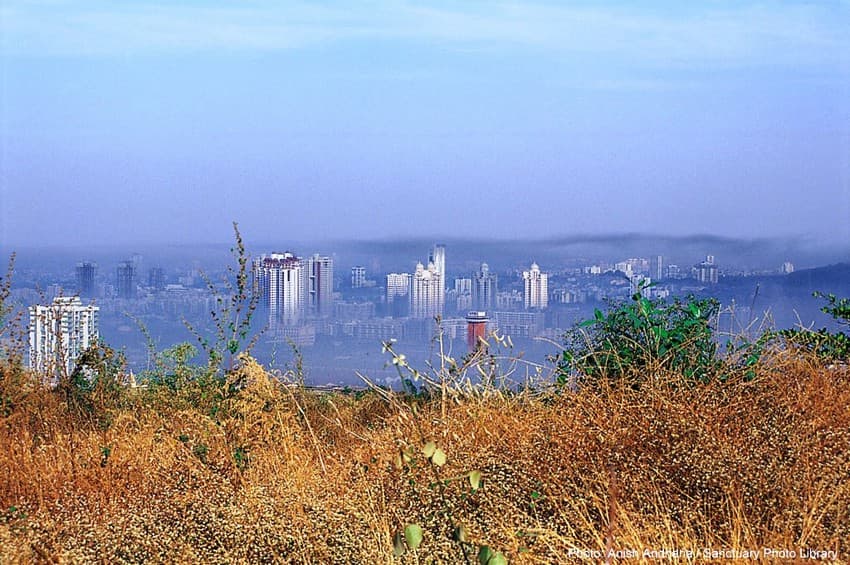“We are spending INR 1,300 crores to build nine kilometres [in Pench Tiger Reserve]… This is public money. It is up to you to decide whether it’s correct or not”, said the Union Minister for Road Transport and Highways Nitin Gadkari in July this year, in an attempt to erroneously point out how a country as ‘poor’ as India cannot ‘afford’ both, safeguarding the environment and meeting the country’s development needs.
This statement by a Union Minister shows India’s approach to so-called development that concentrates on the rate of industrialisation and employment, the growth of the Gross Domestic Product (GDP) and personal incomes, and in this case, the extent of road connectivity. While development of a society is important, looking at it in isolation from the environment is, at best, ignorant and counter-intuitive in the long run. The current view of the relationship between environment and development is that i) the needs of the environment are distinct from the needs of development and, ii) there is a trade-off between concerns of environment and that of development that necessitates attaining a balance between the two. This reflects an oversimplified view of development, the role of ecosystem services in aiding it, and the underlying economics at play.

Development and environment must coexist.
According to Nobel laureate Amartya Sen, development should be seen as an expansion of the real freedoms that people enjoy. By freedom, Sen broadly refers to political freedoms (in the form of right to elections and other political and civil liberties), economic freedoms (to participate in production and consumption processes) and social opportunities (such as access to education and healthcare). His approach of freedom as development looks beyond the idea of incomes as indicative of welfare.
That ecosystem services also constitute the freedoms of people is not inconsistent with Sen’s development paradigm. Ecosystem services refer to the myriad life-giving and life-sustaining benefits, both tangible and intangible, quantifiable and non-quantifiable, that humans take for granted.
The Millenium Ecosystem Assessment, 2005 lists various ecosystem services and includes provisioning services such as products directly obtained from the ecosystem; regulatory services that affect climate, water quality and floods; cultural services such as recreation, spiritual and aesthetic benefit; and supporting services that include photosynthesis, soil formation and nutrient cycling.
Beyond a certain extent, disregard for the environment in the development process can lead to deprivations resulting from direct scarcity of resources such as water. Such deprivations affect the well-being as well as incomes of individuals. The recent droughts in the city of Chennai can be taken as a hard-hitting example. These droughts resulted in water cuts, forcing people to rely on private water vendors. An article in The Wire reported that this made water a costly commodity, with its price sky-rocketing adding to financial stress, especially of the poor.
Increased investment in protecting ecosystems will reduce severity and frequency of natural calamities as well as associated illnesses and loss of life. According to a United Nations estimate, in the last two decades, around 4.2 billion people have been hit by weather-related illnesses and diseases globally, with the biggest losses borne by low-income countries.
Environmental destruction also propagates social inequality. The relationship between environmental injustice and climate hazards is nothing short of a vicious circle. The disadvantaged groups of the society, especially those whose livelihoods depend on natural resources, are the worst hit by any environmental catastrophe, facing loss of life, property, assets and income. Increased vulnerability makes these groups even more susceptible to the vagaries of climate change. Climate-related disasters not only prove expensive for individuals, but imposes a heavy cost on the nation’s economy, impacting its GDP and goes against the very essence of development.
In economics and ecology, there is no concept of balance; there are equilibria which are achieved through complex interactions. We lose out on the benefits of the interactions between the environment and development when they are considered as distinct entities.
Achieving the equilibrium of sustainable development entails acceptance of the interplay between ecosystem services and economic development, and its incorporation into policy.
Focusing merely on incomes and disregarding the multi-dimensionality of development creates what Sen refers to as ‘un-freedoms’ or deprivations. Indifference to environmental concerns in fact will induce more costs in the long run, along with increased social inequality. The state and the society at large, thus, have an important and an extensive role to play in strengthening the freedoms that people enjoy, and sustained supply of ecosystem services is no small freedom.
Climate change and its effects are the biggest issues facing society in the 21st century and are very existential. That ecology is the bedrock of every nation’s economy, is being increasingly accepted. The Millennium Development Goals as well as the Sustainable Development Goals that replaced them, both incorporated climate based actions; Costa Rica has adopted Payment for Ecosystem Services; and New York City made substantial investments to source its water through a revolutionary, holistic watershed project. Tackling climate change calls for ambitious and revolutionary actions which will require fundamental changes in the way the world economy and politics run, and a change in the mind-set of the people.
Ecology and economics are branches of the same tree; the former is the study of the environment and the latter is its management. Forgoing the former to make substantial strides in the latter is not only impractical, but also catastrophic.
This article was first published in The Tilak Chronicle in September 2019.
——————————————————————————————————————————————————————
About the Author: Pooja Patki works in the Conservation Behaviour Department at the Wildlife Conservation Trust, Mumbai
——————————————————————————————————————————————————————
Disclaimer: The author is associated with Wildlife Conservation Trust. The views and opinions expressed in the article are her own and do not necessarily reflect the views and opinions of Wildlife Conservation Trust.
Related Links
- Conservation Strategy
- Roadkills and the Coming of Age of Citizen Science
- Parley with the Mind
- It’s all about us!
- Village Social Transformation
